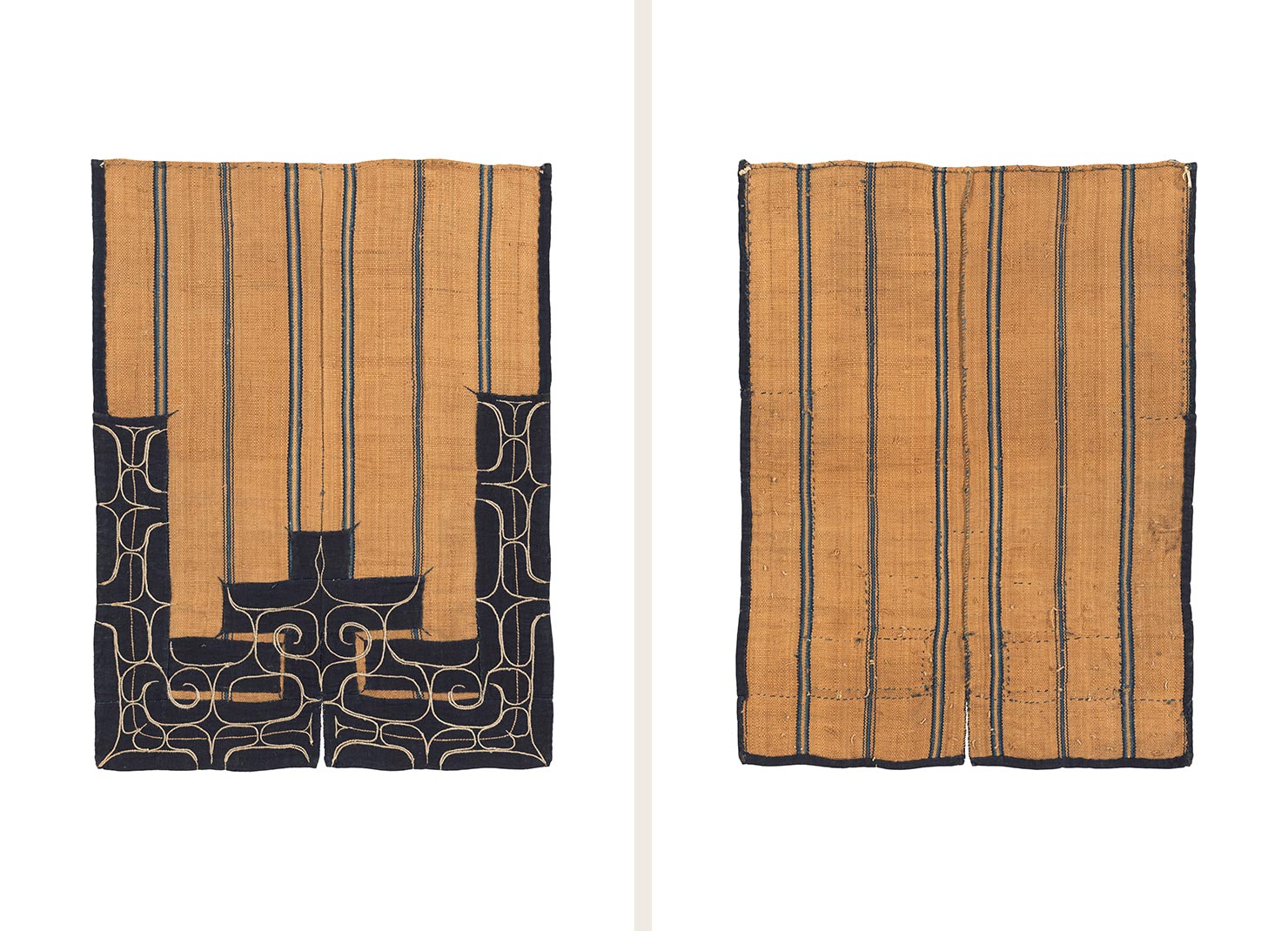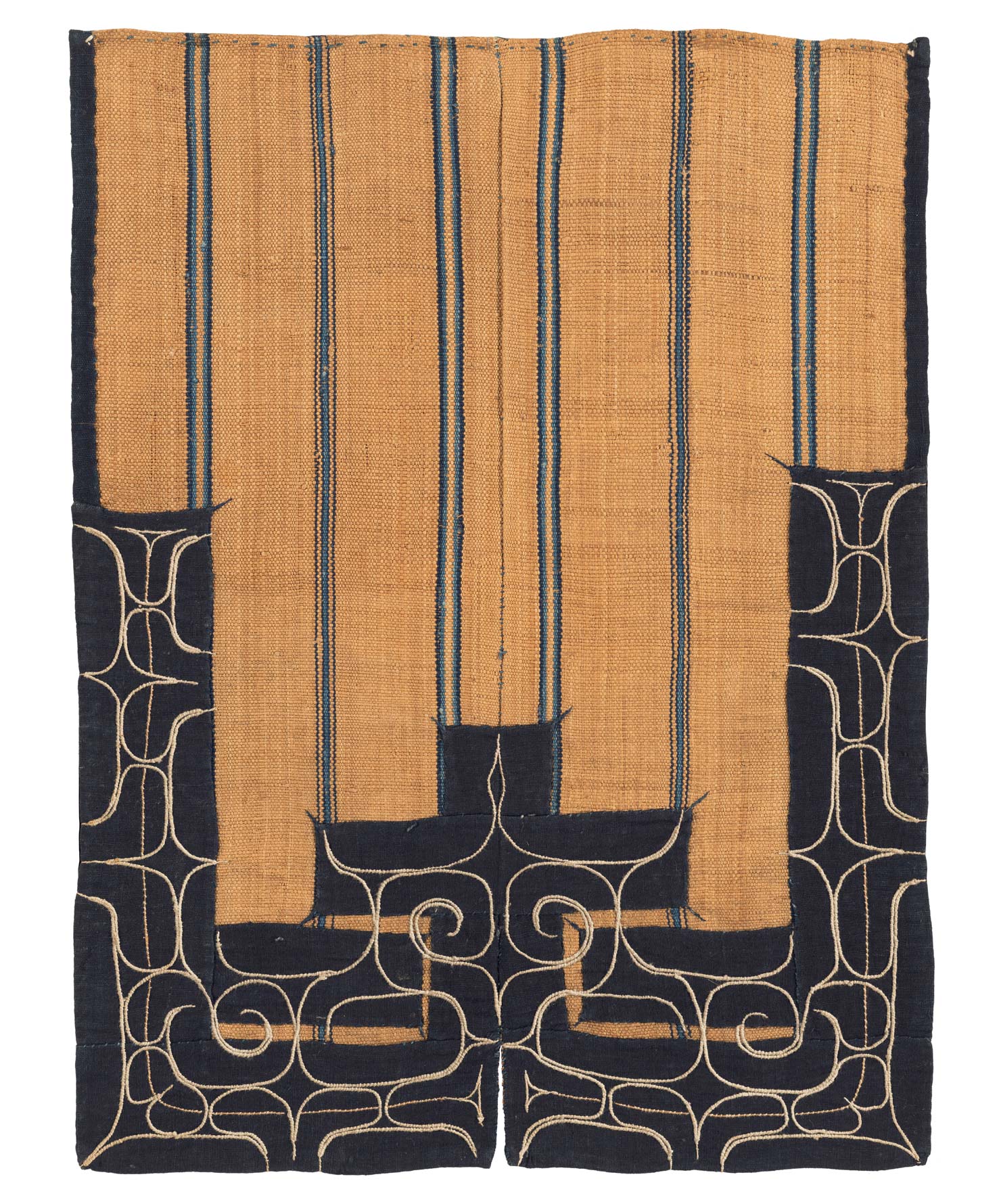ITEM 16426
Ainu Apron (Maitari)
Ainu People, Hokkaido, Japan
Mid 1800s – early 1900s
Elm bark fiber, cotton; applique, embroidery, striping
Meiji Period (1868-1912) circa 1890
39.5 x 56 cm (15.5 x 22 in)
While robes are the most commonly-known Ainu garments, the traditional formal outfit for both men and women also included an apron (maitari マイタリ or mantari マンタリ). Elaborately decorated with applique and embroidery, these items demonstrate how functional garments were adapted into adornment. Comprised of two lengths of two-tone striped attush cloth, the maker of this maitari embellished it with indigo-dyed cotton applique and cream embroidery.
As these garments are rarely found on the market, it is one of only three aprons ever collected by Thomas Murray. One of these currently resides in the collection of the Minneapolis Museum of Art (2019.20.19).
Provenance: This apron was gifted by an unknown student to John Oakley Spencer, PhD. (July 11, 1857 – May 24, 1947), a Methodist missionary and professor. He traveled to Japan in 1882, where he became dean of Tokyo Anglo-Japanese College (today Aoyama Gakuin University). He returned to the US 1898, serving as president of Morgan State University from 1902 to 1937. This apron passed by descent to the former owner, his granddaughter.
Ainu in their traditional clothing. Wikipedia.





